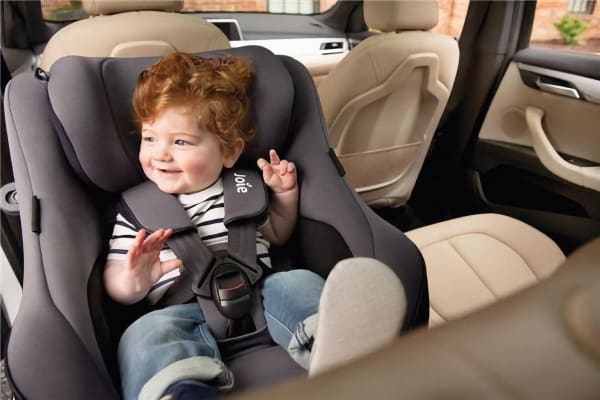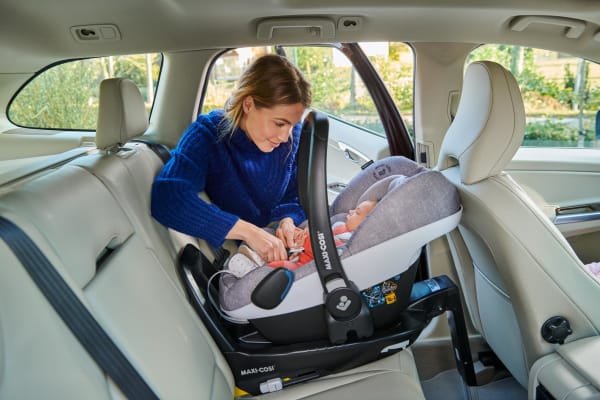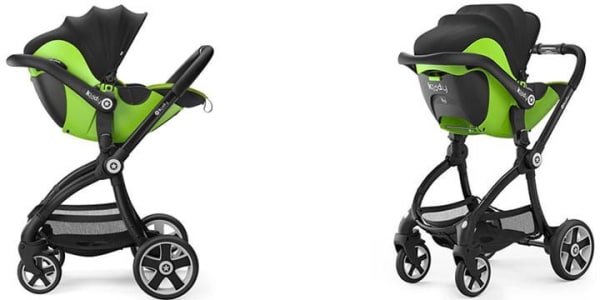How to pick a second car seat (after the 0+ category): when to choose and what is best?

The first car seats that can be attached to a stroller frame, 'Group 0+' capsules, in other words, differ one from another considerably. The angle of the backrest is different, the space inside as well, and then there are the other things to look at - such as safety tests, adapters, and strollers compatibility... (Not only) Those cheaper products often get too small too soon - and that is even more prominent with tall babies or those on the chubby side.

That is why there's no right time to change your 0/0+ group from-birth car seat in general. It can actually happen - and be absolutely valid - somewhere between six and eighteen months of the child. On average, 10 to 12 months is the usual time, but it differest considerably depending not only on the child's size but also the season or depending on the happiness with the given 0+ car seat.

0+ car seats and their usability
GOOD TO KNOW: If, around 6 months of age, is your baby absolutely cramped in the car seat, the car seat is probably a bad one and of low quality.
A very important piece of advice is that, if not absolutely necessary, it is best to use the 0+ car seat as long as possible as, since it's a rearward-facing and an anatomically angled model, it's the safest car seat type. You, however, will have to swap if the child's head is already over the seat back end OR if the child is so cramped, width-wise, that it is actually suffering.
Watch out to not forget to take out the newborn insert before claiming your car seat unusable!
It is also INCREDIBLY dangerous to use the 0+ capsule WITH WINTER CLOTHING. Never do that, and even less so on longer car trips. ALWAYS take the thick layers off - not only to not overheat your little one but also to considerably heighten the safety the car seat should be providing.
One last piece of advice before passing to the second car seats themselves - to think of a better 0+ car seat bought second-hand is often a safer and better option. The Maxi-Cosi Cabriofix, for example, is one of the roomiest car seats on the market, but there are many (you can go and try a few in any baby shop).
Also, to get a better 0+ i-Size norm (up to 105 cm) kind of car seat right from the start might perhaps be a more expensive, but a much safer option that is also better from the longevity point of view.
Second car seat categories & what is the best?
When your little one is too big to fit into the 0+, it's time to upgrade to a higher-number category.
The best practice here is: the narrower the height/weight range is, the better fit and, thus, protection the car seat will provide in case of an accident.
Many moms think of the next category of car seats - probably because it is not a cheap product - the opposite, most of the time. In an effort to save money, they choose a very broad category of 0-36 kg (from birth to 150 cm) or the front-facing-only, non-reversible category ranging from 9 to 36 kg (76 to 150 cm). It is advisable to remember that the child should be in the opposite direction of travel to AT LEAST 15 months of age**, as well as keeping in mind the above-mentioned principle of narrower ranges being much safer.
The best and most suitable choice after a 0+, "egg-shaped" car seat is, therefore, the 0-18 kg category, which is a car seat that will last from the starting 6 to 12 months up to the age of about three to four years.
A 0-18 kg car seat can be used for newborns, but the angle is usually less suitable for these tiny babies than the angle of 0+ capsules.
A 0-18 kg car seat can be used in the rear-facing position the whole time, which is ideal from the safety point of view (less so from the child's view point of view 😉). For the age of 18 months+ (or later, whenever it's suitable or necessary for you and your child), it can be reverse to face the direction of the ride.
The 0-36 kg category can honestly be recommended ONLY to very occasional travelers and parents with an extremely limited budget. Pay attention to a quality brand and a suitable safety certificate in the broad height/weight category that much more! Do pick only those 0-36 kg car seats that boast a good, acceptable crash test result (such as ADAC od OAMTC). For the widest category with the least protection for small babies, safety testing is even more important than for other car seat types.
After a reversible, front AND rear-facing car seat, the best and most logical continuation should be the closest narrow-ish range category - the 9-36 kg. These are equipped with either a front shield (my personal favorite, but everybody has different preferences) or an internal five-point-harness- The shield or the inside belts will be taken off after the child is at least 100 cm tall, converting the car seat into the last stage configuration, the 15-36 kg that is using the three-point car safety belt only.
0-25 or 9-25 kg category car seats are occasionally also available - here, in this category, are for some unknown reason quite a few bad crash test happening. Do be careful to pick a good, tried-and-proved car seat with good safety results.
A car seat is the only thing protecting your child in case of an accident. Bear that in mind when picking one, and look at its materials, overall build and feel...
With more children in the car, you'll probably be looking at narrower models.
What about booster seats?
The simple, no-seatback booster seats (which are usually used as an alternative to a 15-36 kg older toddler car seat) are not recommended from the safety point of view. They only provide a higher seat position as not to strangle your kid with the car safety belt in case of a crash. They don't provide any protection whatsoever. Do think of these as a last resort or a product for very tall, 11+ years old children - never a daily-use car seat alternative.
Is Isofix necessary?
Isofix is a very practical invention that simplifies the installation of a car seat in your car. By making the installation easier, it helps to avoid mistakes with car seat attachment resulting in lower saftey and, therefore, indirectly helps boosting the protection level.
Almost all cars (from the year 2001 and up) DO feature Isofix connectors on at least two rear seats, so no worries there.
It certainly is better, or at least more practical, to get a car seat that does feature Isofix attachment bars (or is compatible with an Isofix base on which you click it on). If an Isofix base or a model having Isofix connectors is not usable in your car or is not in your price range, don't sulk 😉 If you read the manual of your non-Isofix car seat well and manipulate with it right and with care, the protection of non-Isofix car seat is pretty much the same (good) as of those with the Isofix system.
That is, of course, only applicable if you get a good car seat brand/model - and vice versa, Isofix-featuring car seats that are cheap and "bad" are still bad even when connected with Isofix.
